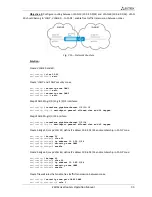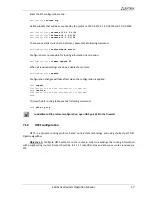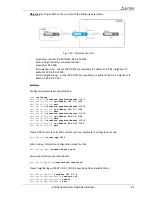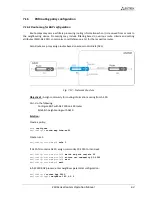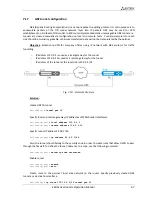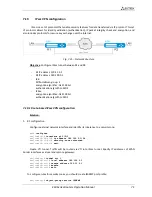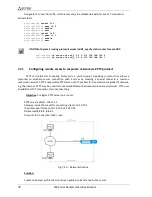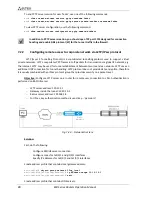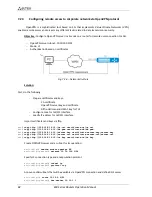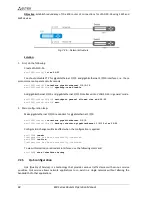
ESR Series Routers Operation Manual
69
7.18
L2TPv3 tunnel configuration
L2TPv3 (Layer 2 Tunneling Protocol Version 3) is a protocol used for tunnelling of 2nd level OSI
model packets between two IP nodes. IP or UDP is used as an encapsulation protocol. L2TPv3 may be used
as an alternative to MPLS P2P L2VPN (VLL) for L2 VPN establishment. In ESR router implemented static
unmanageable L2TPv3 tunnels, i.e. tunnels are created manually via configuration on local and remote
hosts. Tunnel parameters for each side should be mutually agreeable, otherwise transferred data will not
be decapsulated by the partner.
Objective
: Establish L2 VPN for company offices using IP network with L2TPv3 protocol for traffic
tunnelling.
UDP is used as an encapsulation protocol, port number at the local side and port number at
the partner's side is 519;
IP address 21.0.0.1 is used as a local gateway for the tunnel
IP address 183.0.0.10 is used as a remote gateway for the tunnel
Tunnel identifier at the local side equals 2, at the partner's side - 3
Session identifier inside the tunnel equals 100, at the partner's side - 200
Forward traffic into the tunnel from the bridge with identifier 333.
Fig. 7.20
—
Network structure
Solution:
Create L2TPv3 333 tunnel:
esr#
configure
esr(config)#
tunnel l2tpv3 333
Specify local and remote gateway (IP addresses of WAN border interfaces):
esr(config-l2tpv3)#
local address 21.0.0.1
esr(config-l2tpv3)#
remote address 183.0.0.10
Specify encapsulation protocol type and UDP ports' numbers:
esr(config-l2tpv3)#
protocol udp
esr(config-l2tpv3)#
local port 519
esr(config-l2tpv3)#
remote port 519
Specify tunnel identifiers for local and remote sides:
esr(config-l2tpv3)#
local tunnel-id 2
esr(config-l2tpv3)#
remote tunnel-id 3

